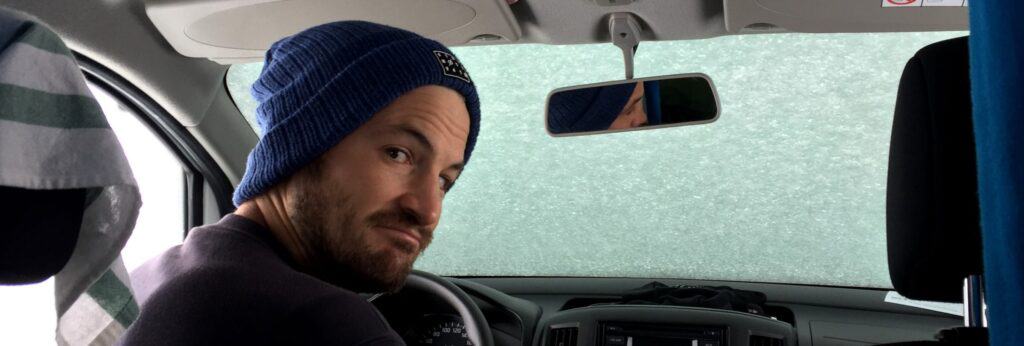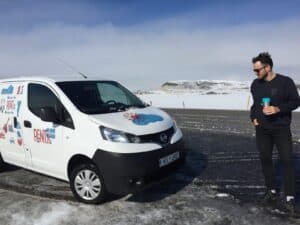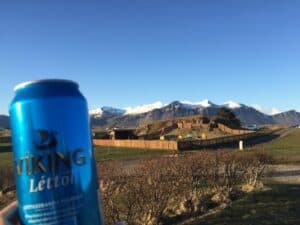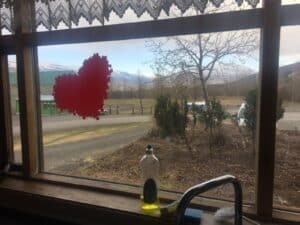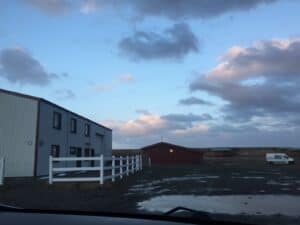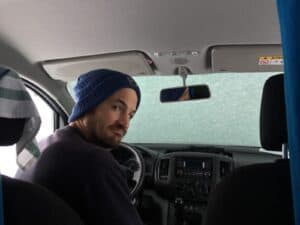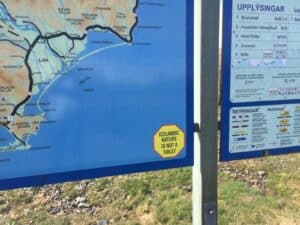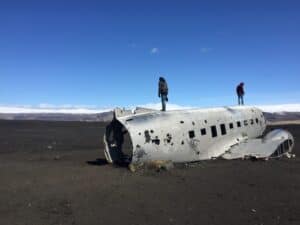Iceland has been on our to-go list for a very long time. What we knew about it – and at first it was very little – turned out to be enough to finally make a decision of risking damaging our 6-months budget and getting soaking wet in unpredictable weather: we booked our flights to ‘the land of fire and ice’. After a very long discussion about the best way we had pictured ourselves moving around the country, we finally decided to rent a camper van. Was it worth it? Was it easy? Was it cheap? We had hundreds of questions ourselves. We hope this little guide about “How to do Iceland in a camper van” is going to be useful for fellow travelers who might find themselves in a similar situation.
Food & cooking in the camper van
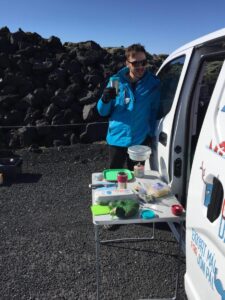 Before we set off, we had obviously heard about the high cost of food and drink in Iceland. Our week in Iceland was just one week out of six month’s travel, so we wanted to stick to as tight a budget as possible.
Before we set off, we had obviously heard about the high cost of food and drink in Iceland. Our week in Iceland was just one week out of six month’s travel, so we wanted to stick to as tight a budget as possible.
Therefore, we planned ahead and bought things like wine, oats, ground coffee, powdered soups, grains and sauces before we arrived (we had plenty of fun trying to keep our one piece of checked luggage under 20kg). Once we arrived, we added to our bounty with a big shop in Bónus (along with Nettó, the cheapest and most numerous supermarket in Iceland), where we bought perishable things like fruit and vegetables, milk, yogurt and butter.
Good luck trying to find beer in Bónus, but we were able to get some really cheap ones in Nettó and a couple of other less common supermarkets, sometimes for as cheap as 90 krona for a 500ml can.
Our van’s fridge was big enough to put all of the cold items in, and runs whenever the car is on, so keeping it cool was not an issue. The cooking equipment supplied with the van allowed us to make ourselves a delicious porridge every morning, in general sandwiches for our lunch, and some kind of hot meal for dinner each night, usually pasta or quinoa. It was great to set up the table and chairs when needed, but be aware that the weather often means cooking without some form of shelter is an unpleasant experience!
One final tip! If you plan on using the ‘outside fridge’, that is, putting your cold items outside overnight (so as not to drain battery by having the fridge on), don’t move the car after you put the stuff out! I of course ran over a brand new carton of milk and four eggs one night!? So, including the food we pre-purchased, we spent around 27,000 krónur. Oh, and if you want to buy a cafe coffee at any stage to supplement your diet, you’ll be looking at 500-600 krónur on average.
Campsites or ‘free’ camping?
Before we arrived to Iceland, we really wanted to know about the possibility of ‘free’ camping with a camper van. We read various blogs and asked the staff at the rental company, and learned that whilst illegal to camp without permission of the landowner (this effectively means anywhere but a campsite), it is possible to do so, although frowned upon by the locals. After our experience, we suggest asking yourselves the following questions: are you prepared to spend your entire trip without a shower? This will depend on time of year, but a hot shower is quite invaluable if you’re there in the cold months. Are you prepared to cook all of your meals without proper shelter? Not only the cold, rain or snow will at times make it difficult to prepare food on a gas stove, but we found that the wind was the main problem when all we wanted to do was quickly cook our meal.
Are you prepared to spend a lot of time trying to find a suitable campsite that is out of view of the main road and that has shelter? If you are sticking to the Ring road, you will find that most areas that may seem suitable for a place to spend the night have very prominent and obvious signs that state camping is prohibited; plus, these areas rarely have the shelter from the wind that you will crave. Are you prepared to leave no trace of your stay if you do not use an official campsite? Think no toilets, no rubbish bins.
We quickly found that our answers to the above questions were always no. Therefore, we stayed in the following campsites, all of which included a sheltered space to cook, showers, washing up facilities, and a space to park your van for between 2,800 – 3,500 krónur (price may increase in high season):
- Skógafoss Falls campsite (shower price not included in camping rate, pay 300 extra for 5 minute shower, no kitchen, shelter for using your own gear only, no inside area for warmth)
- Camping Höfn (pay extra for shower, 50 Krónur per 90 seconds, very small stove which guests can use, but better to use your own gear)
- Vogar Travel Service in Mývatn, also premises of Daddi’s Pizza (shower included in price, no option to not pay for it, two large stoves, warm inside area)
- Hamrar campsite in Akureyri (beautiful campsite with plenty of open space, shower included in price, good cooking facilities and warm inside area)
- Snorrastaðir campsite (great location on a farm, large cooking area and warm inside space, showers included in price)
Be sure to arrive early, as even in the shoulder season, campsites filled up to the brim! If you arrive too late, you might miss out.
Iceland weather in May
When choosing a date of the Icelandic trip, there is no right nor wrong. Winter means a beautiful white snow covered landscape and the Aurora on the night sky, but keep in mind that not all of the roads might be open. Summer leads you to the most remote parts of the island, but most likely together with flocks of other people thinking the same way (flocks of travelers in Iceland luckily means less crowds than other popular spots around the world, much like Iceland itself). Spring and autumn are chosen by many visitors, but they also come with their pros and cons.
Before our arrival, we had downloaded a few travel apps that were meant to help us on the road. Our tip? Forget the weather app! As the saying goes, if you don’t like the weather in Iceland, wait 5 minutes. Throughout our stay we were lucky to experience a wide variety of conditions that the island has to offer. Sun was our solid companion nevertheless, so we still consider ourselves lucky. Especially with our decisions about renting a camper van! May turned out to be quite indecisive – it rained, it snowed, it hailed, we were driving through the clouds, we had to resist strong winds that were trying to convert our car into a hovercraft, with us in it. We survived! But we pitied others who had chosen to stay in tents or travel by pushbikes. I will never forget how one night we went to sleep after the most beautiful sunset with clear skies and pleasant winds blowing and woke up to snow covered campsite! Unpredictable weather made our trip adventurous and memorable – observed from the car seat perspective! ?
Responsible camper van tourism in Iceland
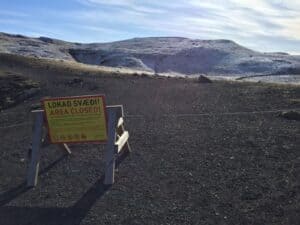 If you’re planning on renting a camper van in Iceland, you have most likely learned that ‘free camping’ was possible until 2015, when Icelandic camper law changed. Perhaps you have also read that you will need to either buy something, or pay for the use of toilets in almost all service stations or shops in the country. Yes, both of these things are true, and yes, most Western, progressive, developed countries offer these things for free.
If you’re planning on renting a camper van in Iceland, you have most likely learned that ‘free camping’ was possible until 2015, when Icelandic camper law changed. Perhaps you have also read that you will need to either buy something, or pay for the use of toilets in almost all service stations or shops in the country. Yes, both of these things are true, and yes, most Western, progressive, developed countries offer these things for free.
However, after our week-long trip, we can only assume that the Icelandic people have decided to take these actions for a very good reason. We were quite shocked by some of the things we saw along the way, including parking lots which had obviously hosted ‘free’ campers that were full of litter, campsites that were closed for winter whose bins were overflowing with waste, tourists blatantly ignoring signs that asked people to remain behind a certain point, or not to climb on top of a certain plane, and even during some of the hikes we did, far from the road, we saw cigarette butts, tissues and other litter around.
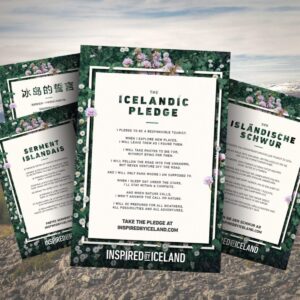 Of course this is the kind of thing you see all over the world, but we figured that Icelandic people (there are not many residents) were probably not responsible for all of this, and therefore the blame must rest with tourists. Thus, we accepted the fact that an appropriate response would be the extra regulation that you now see. We really hope that it makes a difference, and that tourists come to respect what Iceland has to offer, not just enjoy it. So what can you do to ensure your camper van trip does not add to the problem? Have a look at the following points:
Of course this is the kind of thing you see all over the world, but we figured that Icelandic people (there are not many residents) were probably not responsible for all of this, and therefore the blame must rest with tourists. Thus, we accepted the fact that an appropriate response would be the extra regulation that you now see. We really hope that it makes a difference, and that tourists come to respect what Iceland has to offer, not just enjoy it. So what can you do to ensure your camper van trip does not add to the problem? Have a look at the following points:
- Pay for your camping. If you budget this into your trip from the start, you will not be disappointed by the extra expense once you arrive. It takes care of problems such as using toilets, disposing of your rubbish, and of course, abiding by Icelandic law.
- Take a few plastic bags with you, or get them from a shop when you buy your groceries. Use these as garbage bags while you travel, so that during the day, or even overnight if you are not in a campsite, you can put your rubbish in the bag, and then put it in the appropriate place when you next have an opportunity. Do not add to overflowing bins! Some of the locations in Iceland are very remote and isolated, and it is hard to provide services to them, so don’t make the job even harder for the local population. Also, recycling is possible in Iceland, so read the sign on the bin you are using. For the record, we took reusable shopping bags with us for our groceries, but found that a plastic bag was essential for the waste problem.
 Toilets: there will inevitably be times when you just can’t hold any longer, there are some super long drives to be done between rest stops. Try to plan ahead, use a toilet whenever you can, and if you have to go, there are plenty of items in service stations or other shops that are very cheap, so it’s not like you’re going too far out of your way to pay for the loo. Chocolate chip cookies became a regular purchase when we desperately needed the toilet!
Toilets: there will inevitably be times when you just can’t hold any longer, there are some super long drives to be done between rest stops. Try to plan ahead, use a toilet whenever you can, and if you have to go, there are plenty of items in service stations or other shops that are very cheap, so it’s not like you’re going too far out of your way to pay for the loo. Chocolate chip cookies became a regular purchase when we desperately needed the toilet!- Pay attention to the signs. We saw too many tourists ignoring the signs, both on the road and off the road. Although a lot of the time this seems quite harmless, when everybody does it, it undoubtedly becomes a problem, and is surely one of the reasons the signs were created in the first place. For example, stopping on the side of the road for a photo; a one-off does not cause a problem, but many people doing it becomes dangerous. Or walking into areas that are roped off or signed off during hikes. If you see one person do it, this is not permission for you to do it, it only exacerbates the problems of erosion and lack of flora development. Don’t be the one to make others think it is OK.
If you don’t consider yourself as a conscious traveler, a trip in Iceland is the perfect way to start! You will be inspired to maintain the natural beauty of the island as soon as you see it. Plus, it’s actually pretty easy! You can be sure that the waste is recycled, and there are plenty of reminders all over the place about how to be responsible for your stay.
We hope you enjoy your stay in Iceland as much as we did, and that you find some of the things we wrote helpful! We can’t wait to return to see the things we missed out on this time, and of course we’ll be doing it again in the comfort of a camper van! Remember, Iceland is not a cheap destination, nor is tourism it’s primary source of revenue, so if you commit to spending the money, the freedom and choice that a camper van trip offers you makes it the best choice!
Read more: Girls on Tour in Iceland
Happy Camping! #CamperStories
Iceland Travel Guides
If you like what you see, please subscribe to our YouTube channel!

